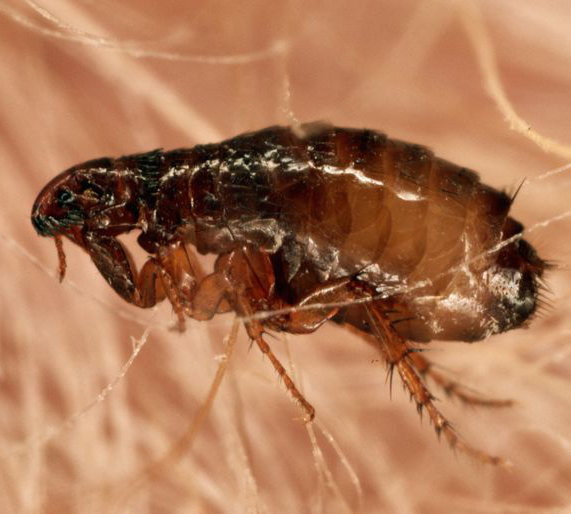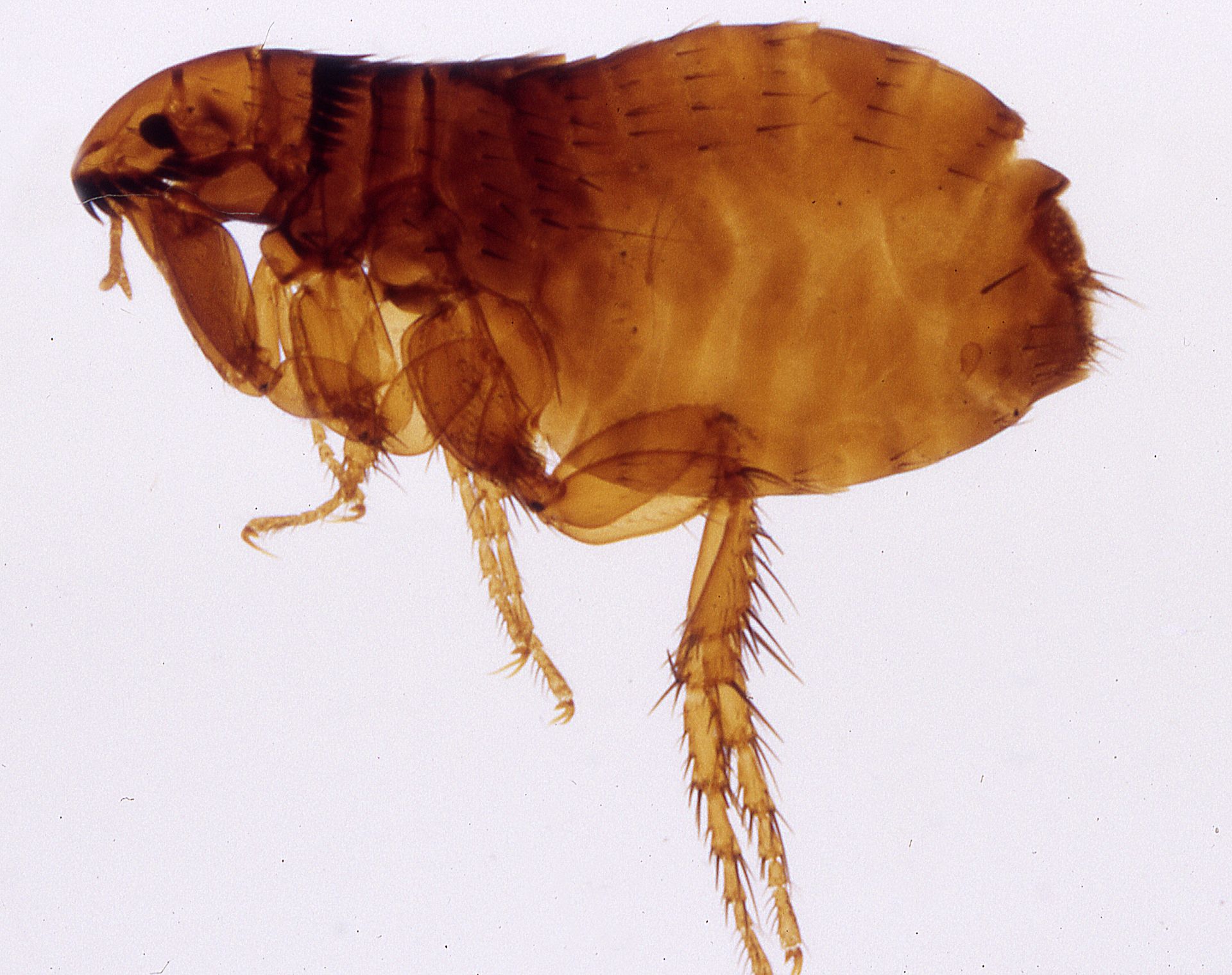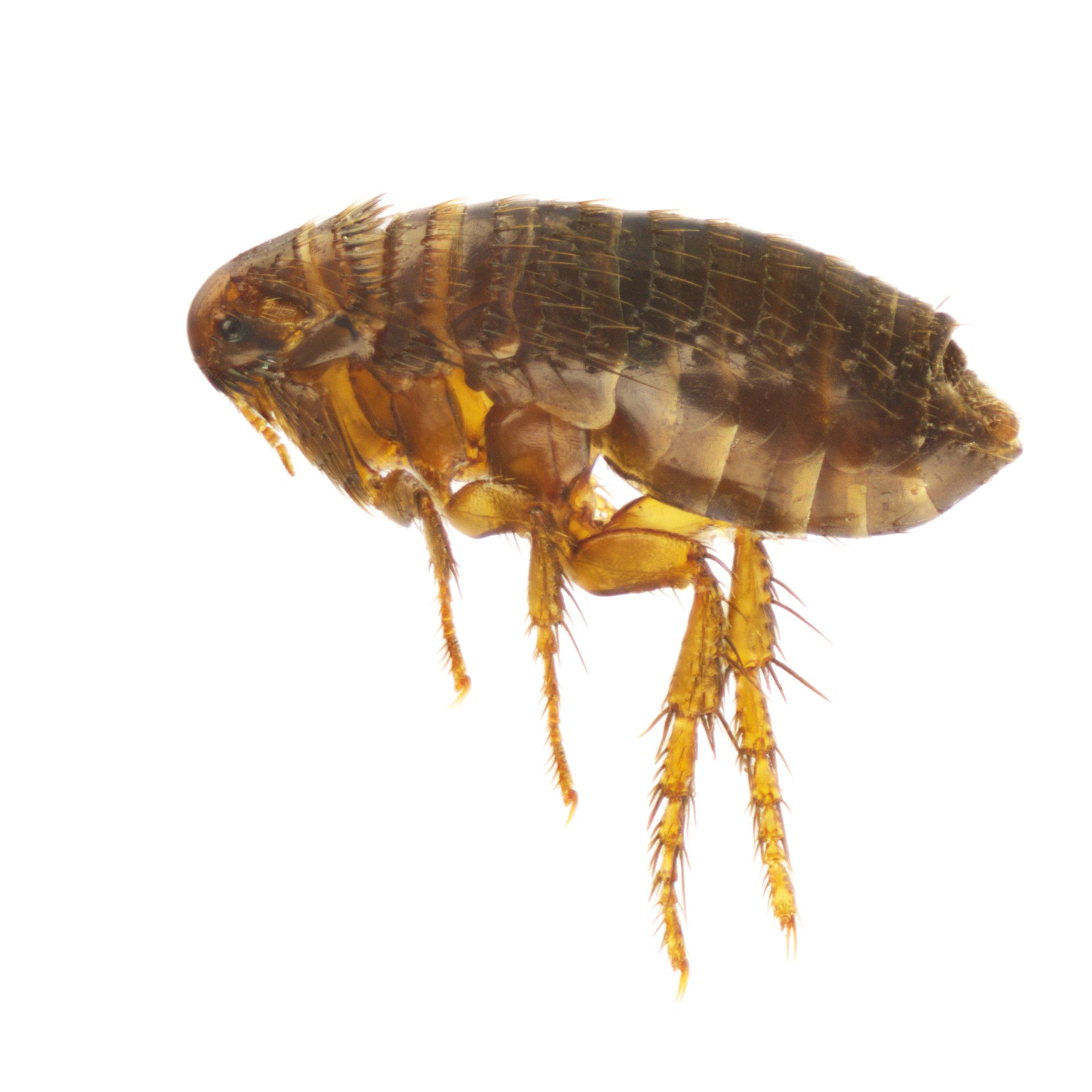
Fleas are external parasites of mammals and birds and they live by consuming the blood of their hosts.
Appearance, life cycle and habits
Fleas are small flightless insects, the adults are up to about 3 mm long and they usually brown. Their flattened bodies enable them to move through their host’s fur or feathers and strong claws prevent them from being dislodged. They have mouthparts adapted for piercing skin and sucking blood and hind legs adapted for jumping. They can jump a distance of some 50 times their body length. Fleas can be pests in homes, hotels, motels and wherever human populations occur, often where these areas are shared with animals.
The adult female may lay some hundreds of eggs in her lifetime but usually about four to eight eggs after each blood meal. The eggs are laid on the animal and these fall off on to floors, the ground, and often in their sleeping and resting area. The eggs hatch anywhere from four to ten days after laying them. The areas surrounding a house can also be a significant source of fleas.
The larvae feed on many forms of organic matter located in carpets and other floor coverings as well as outside in lawns. When finished feeding and fully grown, usually after about 12 – 20 days, the larvae pupate in silken cocoons which are often covered with debris. After about seven to ten days the adults emerge and seek a blood meal from the host. The larval, pupal, and adult stages may extend for many months, depending on the availability of food. Warm and humid conditions during summer and autumn, favour the development of flea larvae, pupae and adults. Flea pupae may remain in floor coverings and cracks in flooring for several months and often the adults emerge from their cases when vibration from walking fractures the pupal cases. The adult fleas then seek blood meals from the legs of any animal or humans nearby.

Dog flea (Ctenocephalides canis)
The dog flea is a species of flea that lives on a variety of mammals, particularly the domestic dog and cat. It closely resembles the cat flea. Although they feed on the blood of dogs and cats, they sometimes bite humans. They can live without food for several months.
Cat flea (Ctenocephalides felis)
The cat flea is an extremely common parasitic insect whose principal host is the domestic cat, but also has a wide host range feeding on dogs, humans and other animals. It is the most frequently encountered species in Australia.Fleas and Disease
Fleas are one of the most significant transmitters of diseases to humans, and also to some animals. Over the last one thousand years, countless millions of people have died because of this transmission of diseases by fleas.
Intestinal Parasites
The dog tapeworm is conveyed from one dog to another by fleas.
The rodent tapeworm is passed on to other rodents when the fleas are infected. Children have occasionally been infected by these tapeworms.
Flea Allergy Dermatitis
Fleas produce a severe form of allergic dermatitis in dogs and cats. Some animals are more susceptible to this form of dermatitis than others. Flea control is important in the prevention of this condition.
Useful tips on fleas
The householder may successfully control fleas even if animal pets share the living area.
Chemical Method
To control fleas, apply prepared emulsion to outside surfaces of buildings and surrounds including foundations, verandas, window frames, eaves, patios, garages, pet housing, soil, turf, trunks of woody ornamentals or other areas where pests congregate or have been seen.
Non-chemical Preventive Methods
- The breeding areas for fleas from animal pets can be significantly reduced by washing floors regularly and vacuuming carpets, including under furniture and areas where animals may rest
- Animal beddings should be removed daily and shaken well away from the home or left in the sun to remove eggs
- The contents of the vacuum cleaner should be heat-treated in a black plastic bag, by placing it in the sun for a few hours. It may also be treated with an aerosol spray before being emptied. The vacuum cleaner and bag must not be stored in a partially full or full condition as the environment created inside the bag is ideal for flea breeding
- A thorough vacuuming is important to reduce any flea population present before going on holidays

